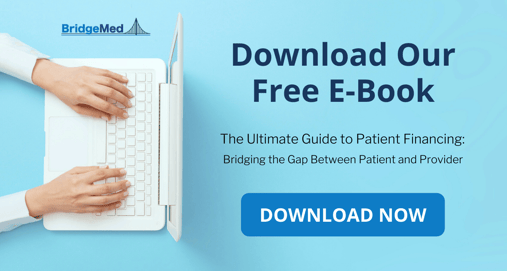How to Improve Patient Collections for Your Health System
.png)
The rising cost of healthcare in the United States has left consumers feeling lost and overwhelmed. High deductible healthcare plans, co-pays, and out-of-pocket medical expenses have all contributed the emergence of healthcare consumerism; the pursuit of making healthcare services more efficient and cost-effective by putting the purchasing powering in the hands of the patient. Because of this, the burden of healthcare payments falls on the patients, leaving healthcare systems with less control over cash flow and AR.
Patient receivables account for 30% of provider revenue, yet less than 60% is collected. High costs have consumers skipping payments due to affordability or skipping treatment altogether, leading to increased bad debt, decreased patient volume, and overall losses in provider revenue. In order to maintain a strong bottom line and optimize revenue cycle management, health systems must adjust their collection methods to meet the needs of healthcare consumers.
The Breakdown in Patient Collections
Patient collections present a challenge to healthcare providers as unpaid and delayed payments decrease cash flow and disrupt administrative processes. Lack of price transparency and poor communication between patients and provider staff results in surprise medical bills, missed payments, and frustrated consumers. As the RCM staff tries to collect, they expend time, money, and manpower, shifting focus away from providing care.
Manual collection methods such as phone calls and paper billing statements have shown to significantly reduce speed to cash and drive up accounts receivable. In addition, these out-dated processes leave a great deal of room for human error and are less efficient and more expensive than digital collection methods. All of these factors contribute to a negative patient experience, which affects the brand and financial standing of the hospital or health system.
The Importance of Communication
The first step in improving the patient collections process and overall patient financial experience is enhancing communication between patient and provider. Healthcare consumers approach their journey expecting an experience similar to that of other retail industries with costs upfront and readily accessible pricing information. 81% of consumers want to know the cost of care prior to the time of service, yet rarely are these resources available. Furthermore, new legislation such as the Hospital Price Transparency Rule requires hospitals to post pricing information online in a format that can be easily understood to assist consumers in the decision-making process.
Before a patient visit, financial services representatives should be available to discuss patient responsibility, including what is covered and what comes out of the patient's pocket, as well as the available payment options. Post-visit, communication through email and text message allows providers to offload the manual burden of payment collections while increasing engagement. Open dialogue between patient and provider strengthens trust, increasing the likelihood that a patient will make payments and return to the provider in the future.
Empower Patients with Flexibility
The patient financial journey can be intimidating for the average healthcare consumer, which is only made more stressful with rising costs. 89% of patients reported needing a year or longer to pay for healthcare expenses, and 37% of patients report they would skip treatment if the practice didn’t offer a financing program. Offering flexible payment plans that allow consumers to pay small amounts overtime gives them more control over how they pay for care, making them more likely to make payments.
Patient collections take more than a month for 74% of healthcare providers, and 78% of surveyed providers said they cannot collect bills of more than $1,000 in 30 days. The more time that passes from a billing due date, the amount collected decreases, which then results in the account going to bad debt. Enrolling customers a payment program pre- or post-service increases speed to cash for the health system while reducing bad debt and AR days. Non-recourse patient financing programs like BridgeMed can be implemented at any point in the revenue cycle, reducing the administrative burden and expense of manual collections.
Taking a Patient-Centric Approach
A crucial element of patient collections that is often overlooked is how provider staff interacts and approaches the payment process. In order to maximize reimbursement on patient receivables, healthcare systems must continuously train and educate their billing department on how to handle the collections process. Providers should come from a place of support and understanding, making consumers feel good about paying instead of bad about owing. Ensure each employee is committed to helping patients navigate their financial journey, and offer resources such as payment plans that increase patient engagement and satisfaction. By taking a patient-centric approach to billing and collections, patients will feel more empowered and confident throughout the financial process.
By improving the patient collections process and streamlining the patient financial experience, patients can focus on their health, not their finances. Communication, flexibility, and understanding fosters a more positive relationship between patients and providers, enhancing the overall patient experience and boosting provider revenue. Shifting the responsibility of collecting from provider staff to BridgeMed amplifies rates of collection, increases days cash on hand, and reduces AR for healthcare systems, while also opening the doors to consumers who struggle to afford care.
Discover how BridgeMed can benefit both your patients and your healthcare organization with zero-interest flexible financing programs by downloading our free e-book below, or by visiting us at www.mybridgemed.com.
